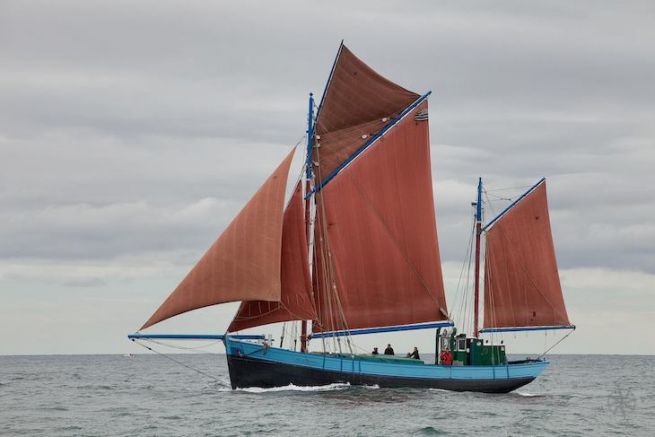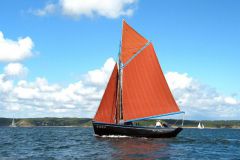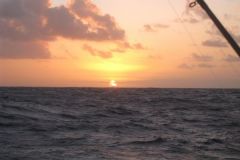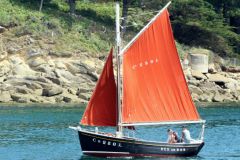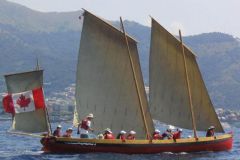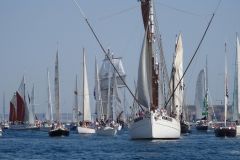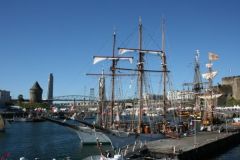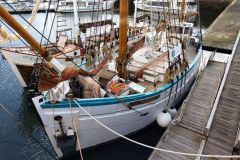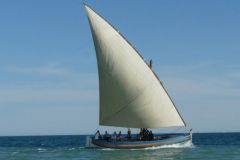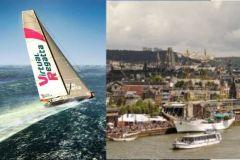Transporting wood
Jacques Morvan is a wood merchant in Le Faou, and supplies the shipbuilding workshops of the Brest arsenal with lumber. He decided to build Notre Dame de Rumengol, a dundee-rigged gabare, a sailboat that would allow him to transport his wood independently.
The old rigging of a length of 21.70 m is born in 1945 at the Keraudren yard of Camaret . euros at the time, Camaret is one of the great centers of shipbuilding. In particular, lobster boats were built there to fish for lobster on the coasts of Mauritania. If its width is identical to the other gabares of the same type, its elongated length gives it a lot of elegance.
The boat owes its name to a Marian sanctuary located on an ancient druidic site in Rumengol. Two pardons take place there every year, on Trinity Sunday and Assumption Day (August 15).
Freight transport
Finally, Notre Dame de Rumengol does not only transport wood. She then sailed to the Mediterranean between Port Vendres and Oran, in Algeria, to transport wine (70 barrels on each trip). Back in Brittany, the ship delivered cauliflowers and onions from Roscoff to Portsmouth, strawberries from Plougastel to Plymouth from Brest, and 90 tons of salt to Noirmoutier, which she then delivered to various salt producers in the region.
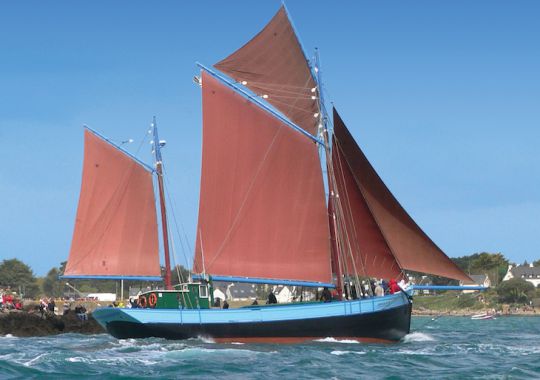
A ship-sabler
But the main part of his career was "sand fishing, which he did from 1945 to 1980, that is to say 35 years. That is to say that he drew sand to supply the various ports of the roadstead. First Brest which was his main port of unloading, Landernau, le Faou and Port-Launey e from the beginning of the 20th century until the 1900s, these were ports with a very important traffic, as shown by the length of the quays.
The euro sand that it carries by cargo of 120 tons per trip was put in bulk in a large hold fitted out today for the transport of passengers. Notre Dame de Rumengol carries several types of sand. The one that will be used for construction to make cement euros the piles were left on the docks to be washed of the salt they contained by rainwater euros the one that will be used to amend the land euros the limestone sand that allowed to reduce the acidity of the land of the peninsula of Pougastel euros or the maerl euros it comes from the decomposition of seaweed, including the red seaweed and is now prohibited dredging because it hosts the reproduction of fish.
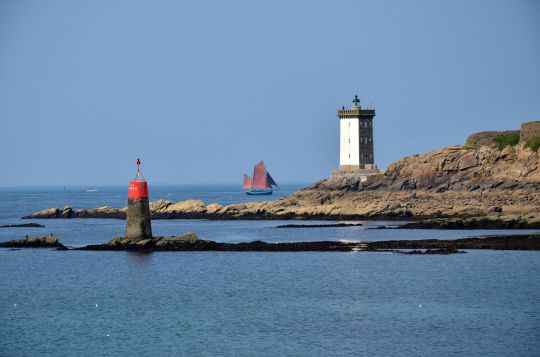
End of career
Finally, the development of road transport put an end to the career of Notre Dame de Rumengol. The boat was left abandoned on a mudflat at Tibidy euros, an islet located at the mouth of the Faou River, at the bottom of the Brest harbor, on the territory of the municipality of L'Hôpital-Camfrout.
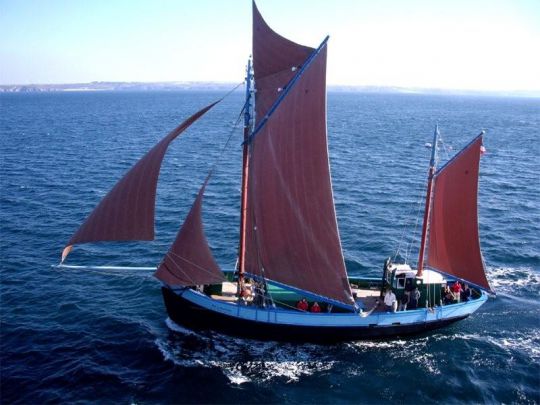
A new life as a heritage boat
Spotted by a group of old rigging enthusiasts, the sailboat was bought back from its owner, unable to let this boat, which is part of the Breton heritage, rot. These new owners created the Antest association in 1981 with the objective of safeguarding and promoting the maritime heritage of the Brest harbour.
It was classified as a historical monument in 1990 and underwent a major restoration project in 1996 in order to be transformed into a passenger ship. Its re-launch during the 1996 Maritime Festivals was the occasion for a great celebration.
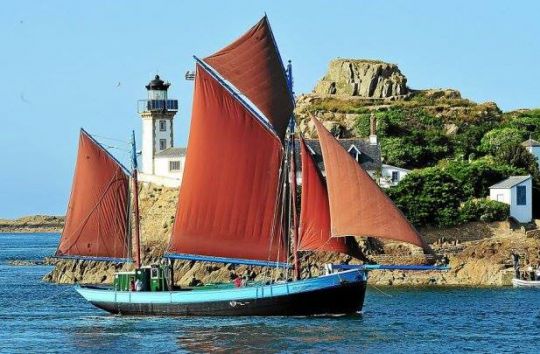
Passenger boat
For several years, the association has been operating Notre Dame de Rumengol through day cruises or longer durations. During 5 months, 3 professional sailors take turns to propose sea trips but also 2 or 6 days sailing to the Scilly Islands on the theme of fishing.
If the watches are assured by professional sailors, the budding yachtsmen are invited euros if they want to learn about sailing on board a real traditional boat. A total of 11 passengers can embark for several days. The large hold now accommodates bunks (protected by curtains), a small kitchen and a large saloon. Two toilets and a shower are also installed on the deck.
Maintaining Our Lady of Rumengol
In addition to the funds collected by these cruises, the association also relies on the support of the state whose public funding is up to 75% (50 paid by the state and 25% by the region and department). This leaves 25% to be paid by the association.
23 years after the last restoration work, a new project is planned from October 2020 to December 2023, at a cost of 558,000 euros (excluding tax). The work will concern the wooden structure (planking, frames, vault, deck, bulwark, coaming).
